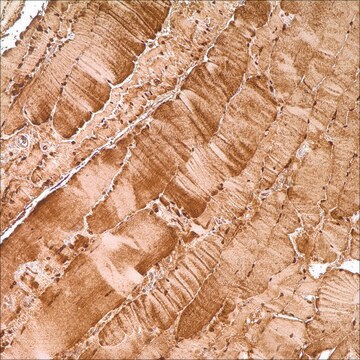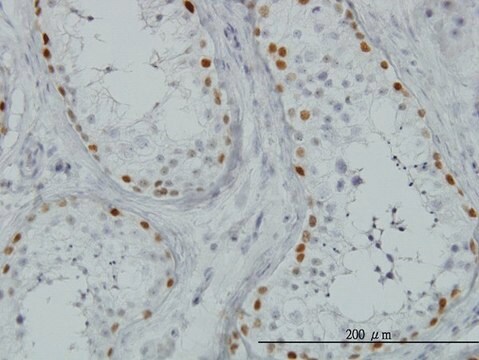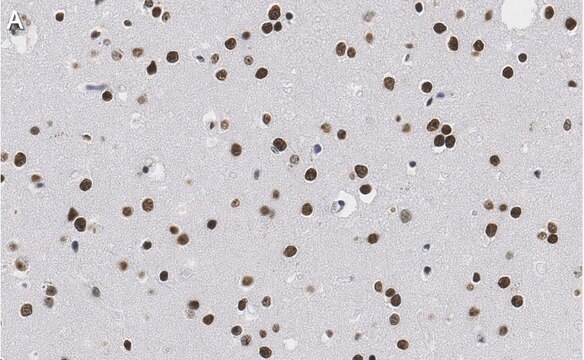MAB4385
Anti-TRA-1-85 Antibody, blood group Antigen Ok(a), clone TRA-1-85
clone TRA-1-85, Chemicon®, from mouse
About This Item
Productos recomendados
origen biológico
mouse
Nivel de calidad
forma del anticuerpo
purified immunoglobulin
tipo de anticuerpo
primary antibodies
clon
TRA-1-85, monoclonal
reactividad de especies
human
fabricante / nombre comercial
Chemicon®
técnicas
flow cytometry: suitable
immunoprecipitation (IP): suitable
western blot: suitable
entrada
sample type induced pluripotent stem cell(s)
sample type: human embryonic stem cell(s)
isotipo
IgG1
Condiciones de envío
wet ice
modificación del objetivo postraduccional
unmodified
Descripción general
Especificidad
SPECIES REACTIVITIES:
Refer to comments regarding specificity
Inmunógeno
Aplicación
Immunoprecipitation
Immunoblotting
Optimal working dilutions must be determined by the end user.
Stem Cell Research
Pluripotent & Early Differentiation
Descripción de destino
Forma física
Almacenamiento y estabilidad
Nota de análisis
Hemopoietic cells and a wide range of normal human tissues
Información legal
Cláusula de descargo de responsabilidad
¿No encuentra el producto adecuado?
Pruebe nuestro Herramienta de selección de productos.
Código de clase de almacenamiento
10 - Combustible liquids
Clase de riesgo para el agua (WGK)
WGK 2
Punto de inflamabilidad (°F)
Not applicable
Punto de inflamabilidad (°C)
Not applicable
Certificados de análisis (COA)
Busque Certificados de análisis (COA) introduciendo el número de lote del producto. Los números de lote se encuentran en la etiqueta del producto después de las palabras «Lot» o «Batch»
¿Ya tiene este producto?
Encuentre la documentación para los productos que ha comprado recientemente en la Biblioteca de documentos.
Nuestro equipo de científicos tiene experiencia en todas las áreas de investigación: Ciencias de la vida, Ciencia de los materiales, Síntesis química, Cromatografía, Analítica y muchas otras.
Póngase en contacto con el Servicio técnico








